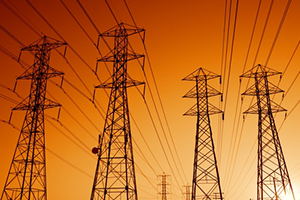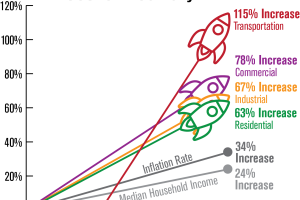Natural gas is composed of methane and carbon dioxide (CO₂) and, like fossil fuels, its production pollutes the earth. But this simple definition masks the controversial use of natural gas. Let’s look at how greenhouse gases have affected – and continue to shape – human interactions with climate change, our energy Electricity Rates in Conroe needs, and the natural world.
What is natural gas?
Looking at natural gas in detail, we know that it is a natural hydrocarbon. Natural gas is found underground and combined with other fossil fuels. Before refining, Naturalgas.org states that natural gas contains:
- Methane (70-90%)
- Carbon dioxide (up to 8%)
- Ethane, butane, and propane (each between 0 and 20%)
- Hydrogen sulfide (0-5%)
- Nitrogen (0-5%)
Effects of oxygen, pentane, and other rare gases
Some of these different properties of natural gas may be familiar to you. Most grills are butane-fueled, and propane heats and powers the barbecue. Are gas and gas the same?

A lot depends on how we use words. In most cases, gas is not the same gas as air.
Natural gas is fuel, and it is sometimes confusingly called natural gas. Natural gas is found along with oil, also known as crude oil.
In North America, people often say “petrol” when talking about fuel for their cars and trucks. This “gas” is not gas at all, but a liquid from petroleum (crude oil).
So the short answer is no, gas and gas are not the same, although that is more a matter of how people use the term than a technical definition. How are gas and gas different?
First, there are many similarities between oil (gas/crude oil) and natural gas. Both are sources of renewable energy that are obtained underground and emit greenhouse gases when used in power plants. They are considered fossil fuels, along with coal, and both were formed millions of years ago from fossils. Gas and crude oil are processed to produce useful products, such as gasoline for cars.
Their conflict is intense. Natural gas is a colorless and odorless gas filled with methane. It remains a vapor above and below the ground, it produces more pollutants than other fuels when burned. On the other hand, gas (petroleum or crude oil) is a hot and viscous liquid that is underground and on the surface of the earth. It is composed of hydrogen and carbon. How is gas used?
The main use of natural gas is to generate electricity in power plants. The Energy Information Administration (EAI) lists the top five natural gas sources in the United States in 2019 as follows:
Generate electricity (36%): Burned gas causes generators to produce electricity.
Industrial use (33%): as a source of heat and for the production of various products. Residential (16%): heating, water, and kitchen.
Commercial (11%): domestic heating, water, and electricity. Transport (3%): fuel for fuel in the form of liquefied natural gas (LNG).
Natural gas is considered the cleanest fuel. New gas plants emit about 30% less carbon dioxide than fossil fuel plants and 50 to 60% less carbon dioxide than new coal plants.
Natural gas production was 2.5 trillion cubic meters (88.286 billion cubic feet) in 2000. This number increased to 3,700 billion cubic meters (130,664 billion cubic feet) in 2010. The increase is increasing, but the market continues to grow, with more than 4,000 billion cubic meters of gas produced in 2019 to meet.





